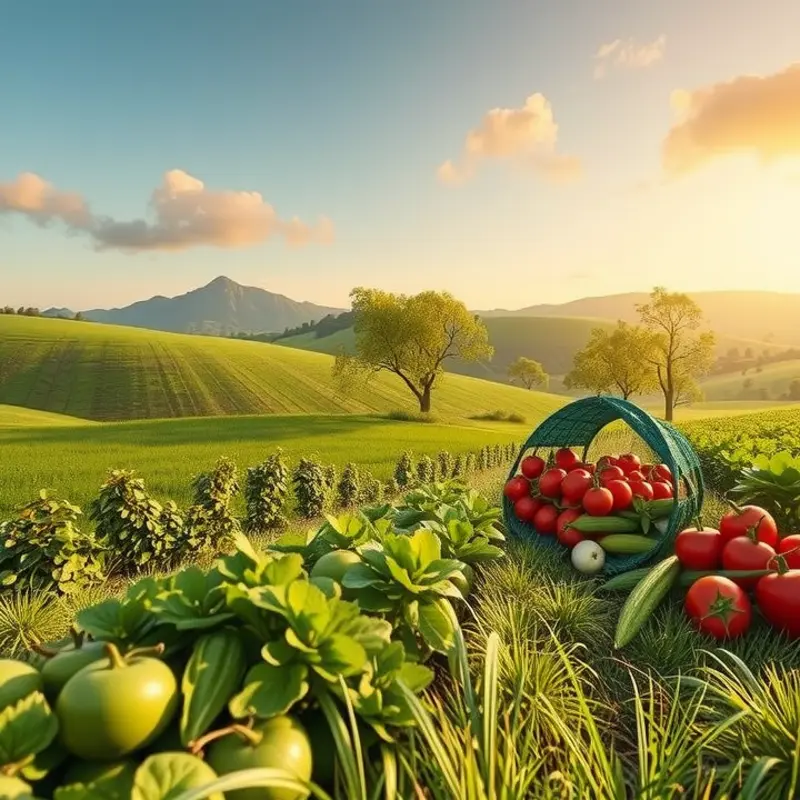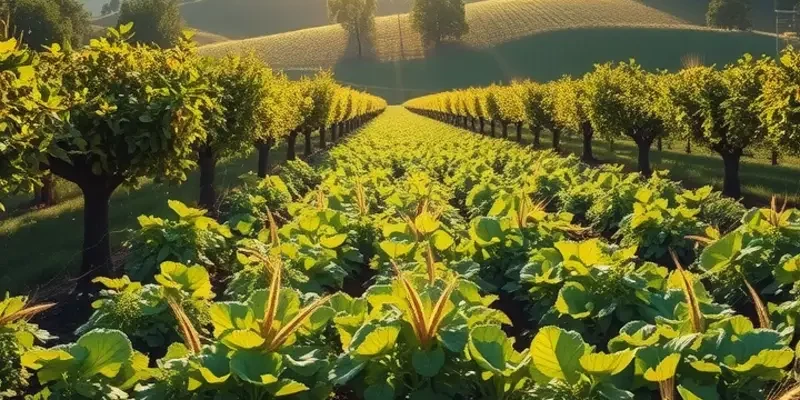With rising water scarcity impacting communities globally, making mindful food choices is more crucial than ever. By favoring foods that require less water for cultivation, we can not only reduce our carbon footprint but also support sustainable farming practices. This guide explores various low-water food options that can easily integrate into your diet, empowering you to contribute positively to the planet. Ready to embark on a journey toward more eco-friendly eating? Let’s dive into the refreshing world of water-efficient foods.
Grains that Conserve: Empower Your Plate

Grains often form the backbone of our daily meals, providing energy and essential nutrients. Conventional grains like wheat and rice are common, yet they demand significant water resources. Choosing low-water alternatives like quinoa and farro can make a substantial impact on your environmental footprint. These grains not only support sustainable water use but also offer a nutritional profile that can enhance your diet.
Quinoa, a pseudo-cereal originally from the Andean region, thrives in arid conditions. It is a complete protein, containing all nine essential amino acids, plus it’s rich in fiber, vitamins, and minerals. Quinoa’s versatility makes it an excellent addition to various dishes. You can use it in salads, soups, or as a side dish. For a quick meal, consider substituting quinoa for rice in your next stir-fry. Not only will this reduce water usage, but it will also elevate the meal’s nutritional content.
Farro, an ancient grain often overshadowed by more popular grains, is another excellent low-water choice. It requires considerably less irrigation than modern wheat. Farro is high in fiber, magnesium, and zinc, contributing to improved digestion and supporting immune function. Its nutty flavor and chewy texture make it ideal for hearty salads or as a base for vegetable bowls. Cooking farro is straightforward: simmer it in water or broth until it reaches the desired tenderness, and let it soak up different seasonings or sauces.
To maximize the benefits of these grains, explore cooking techniques that maintain their nutritional integrity. When preparing quinoa, rinse it thoroughly before cooking to remove its natural saponin coating, which can impart a bitter taste. For farro, consider a soaking method to reduce cooking time and energy consumption.
Incorporating these grains into your meal planning can be both delicious and eco-friendly. Consider batch cooking quinoa or farro at the start of the week, which can reduce food preparation time on busy days. For more tips on meal planning, visit our practical ingredient batching guide.
By diversifying your grain choices and opting for those that conserve water, you contribute to a more sustainable future. Not only does this shift benefit the planet, but it also enriches your dietary habits with a broader range of flavors and nutrients. Let every grain you choose empower your plate and your commitment to a healthier world.
Fruits and Vegetables That Flourish with Less Water

As our planet faces increasing water scarcity, adopting a sustainable diet has never been more critical. One effective approach is incorporating fruits and vegetables that require minimal water for growth. Among these, squash, melons, and beans offer delicious versatility while conserving precious resources.
Squash, particularly varieties like spaghetti squash and certain types of zucchini, stand tall as water-efficient choices. These hardy plants are well-suited for dry conditions, often thriving with limited irrigation. Their adaptability makes them valuable in a sustainable garden while adding diverse culinary options to your table. You can bake, grill, or steam them to maintain their myriad nutrients. Adding seasonings from this guide eco-smart kitchen storage can elevate simple squash dishes without increasing environmental footprints.
Melons, such as cantaloupe and watermelon, are surprising entrants to the low-water agricultural scene. With deep roots that effectively seek moisture, these fruits flourish even in arid climates. Watermelon, in particular, has been cultivated in desert-like regions for centuries. Enjoy them fresh in fruit salads or transformed into salsas. Their inherent sweetness is a natural treat, reducing the need for additional sugar consumption.
Beans, especially varieties like black-eyed peas, green beans, and fava beans, are wonders of water conservation. Not only do they use less water, but they also enrich the soil by fixing nitrogen, making them a dual-benefit crop. In the kitchen, beans can be enjoyed in stews, salads, or roasted as snacks. High in protein and fiber, they contribute significantly to a balanced diet.
Choosing these crops helps maintain a closed-loop system where soil quality improves while water usage is minimized. This sustainable approach transforms your diet into a catalyst for environmental change, embracing the ethos of mindful consumption.
Incorporating these water-savvy fruits and vegetables into your diet is a flavorful journey toward a sustainable future. Explore the richness they add to your meals and relish the positive impact your choices have on water conservation and global ecosystems.
Final words
Embracing a diet rich in low-water foods is not just a personal choice; it’s a collective effort toward a sustainable future. By selecting grains, fruits, and vegetables that require less water, you contribute to environmental conservation and help ensure our planet remains hospitable for generations to come. Begin by replacing water-intensive staples with these sustainable options in your next meal. Small, conscious changes can lead to significant impacts. Remember, every bite counts on our journey to a more eco-friendly lifestyle, so let your choices reflect your commitment to protecting vital water resources.








